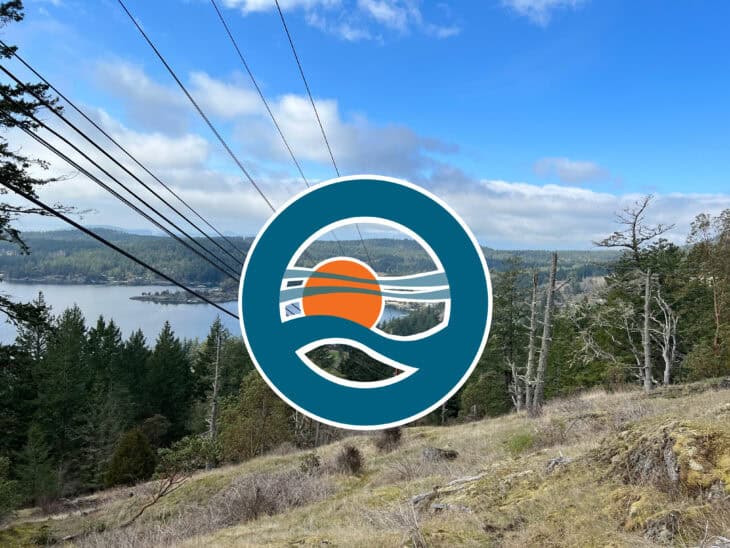Quiet, Clean, Connected
Transportation in San Juan County shapes the future of the islands
San Juan County faces a transportation paradox. Visitors come for the islands’ pristine beauty and tranquility, yet the ways we move—cars, ferries, recreational boating—comprise our largest source of pollution. Now, an electric revolution is reshaping mobility in the islands, promising quieter streets, cleaner air and a stronger, more resilient community.
Community-Driven EV Microtransit

On San Juan, Orcas and Lopez islands, IslandRides has proven small-scale electric mobility can deliver big impacts. Its free on-demand electric vehicle service helps seniors, low-income residents and those without cars get where they need to go while also delivering food bank meals. Since July 2024, IslandRides’ new CarShare program on Orcas Island has logged more than 10,000 miles over 1,654 hours, serving 39 community members who can borrow vehicles without the cost of ownership. The nonprofit is also exploring the potential for EV shuttles to link ferry landings, town centers, health facilities and neighborhoods. Affordable, scheduled shuttles could reduce car dependency, ease parking strain in villages, and make island life easier for residents and visitors alike. A recent Lopez Island survey showed more than 35% of visitors would leave their cars in Anacortes if reliable island transit was available. That single change could reduce congestion on ferries and in towns while cutting emissions from rental cars and day trips.
Electric Flight Takes Off

In August, a prototype electric plane touched down at Orcas Airport and quietly rolled to the county’s first direct-current fast charger, which can recharge cars and planes in minutes. That same month, a developer of electric vertical takeoff and landing aircraft filmed test flights over Orcas Island. These emerging technologies could one day link the islands with Bellingham, Anacortes and Victoria, bypassing ferry waits and offering rapid, emissions-free service. In emergencies, eVTOLs (electric vertical take-off and landing vehicles) could also serve as fast-response lifelines.
Benefits Beyond Transportation
The move to electric transit is about more than getting from one place to another.
Climate and air quality. Transportation is San Juan County’s largest source of emissions. Electrification directly advances local climate goals.
Resilience. Pairing EV fleets with OPALCO’s solar-plus-storage microgrids adds flexible energy storage, bolstering the grid during outages.
Economic savings. EVs have lower fuel and maintenance costs, freeing resources for families and local governments.
Quality of life. Quieter ferries, planes, and shuttles bring more peace to towns and less stress for residents and wildlife.
OPALCO: Power the Future
Electrifying transportation is not just a technological shift—it’s a cultural one. It’s how the islands can reduce fossil fuel dependence, protect fragile ecosystems, and preserve the very qualities that drew islanders and visitors here in the first place.



